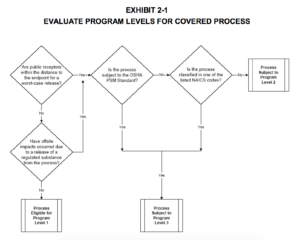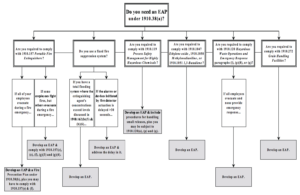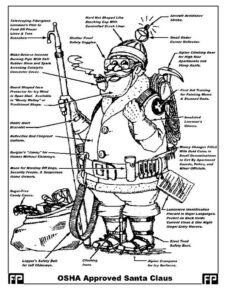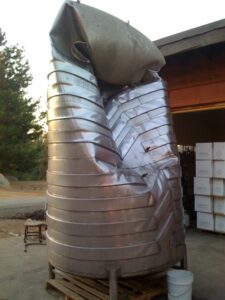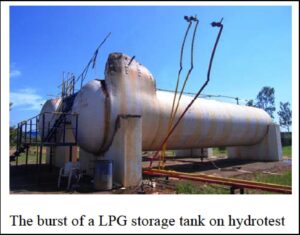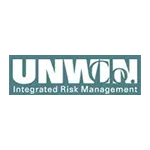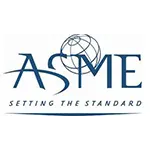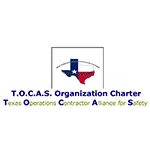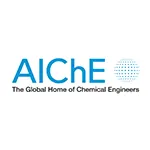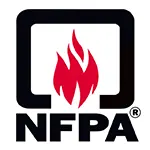CLICK HERE to Renew your Membership
CLICK HERE for a NEW Membership
CLICK HERE to see eligibility requirements for FREE Membership
If you have any questions, please contact me
SAFTENG has:
- Over 18,000 categorized unsafe acts/conditions and accident/injury photos
- Over 1,500 ppt's & doc's in the SAFTENG Library
- Over 4,000 Technical Articles on Process Safety, Emergency Response & OSH topics
- Over 450 videos (those not allowed on YouTube Channel)
Many THANKS to my NEW Members and those who CONTINUE to support SAFTENG:












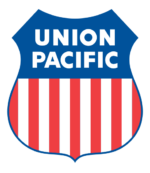

February 12, 2006
As we have discussed before, the EPA broke down its RMP rule into three (3) programs, and each program has criteria that will place the process in one of the three. However, the one criterion that confuses some businesses is how EPA used the North American Industry Classification System (NAICS) to qualify a process for Program 3. Here is what the RMP rules state.
…
HomeRead More »
Read More
February 9, 2006
The proper installation of bonding and grounding systems is important in the protection of personnel and property. At the time of installation, a resistance test is needed to confirm electrical continuity to ground. Evaluating the maintenance requirements, the bonding and grounding system can be divided into three categories:
…
HomeRead More »
Read More
February 6, 2006
Jan 26, 2006 – An accident occurred in a factory in Brazil during pneumatic pressure testing with air from pipework around a tank. There were no blind flanges placed to isolate the pipework to the tank; only the valves were closed. Probably one or more valves failed or were not closed as the tank underwent a pressure test. As a result, tremendous energy was built up in the tank,...
Read More
December 29, 2005
In the world of process safety, this is a no-brainer; but in normal manufacturing facilities, the answer can be quite confusing. Bottom line… if your facility has a PSM-covered process (even an RMP Program 2 or 3 process) we are REQUIRED to have an EAP that complies with 1910.38. But when we are not a PSM/RMP facility the answer is much harder to come by… … HomeRead More...
Read More
September 28, 2005
Who at your place of business calls the National Response Center after your business has experienced a chemical incident. Not many people have ever had to call this center (luckily!) but if your business ever does have a “reportable release” a call just like this one MUST BE MADE within 30 minutes after you have determined that the release exceeds the “Reportable Quantity”....
Read More
September 4, 2005
Human Performance Improvement (HPI) is the systematic process of determining desired performance, continually monitoring performance, discovering and analyzing performance gaps, designing and developing effective interventions, implementing these interventions, and continually evaluating the results of improvement interventions within performance monitoring to ensure that the improvement process takes...
Read More
September 1, 2005
Humans are integral to the safe operation of a nuclear power plant. In the late 1970s, NRC began to focus on protecting and ensuring adequate training of plant staff to perform their assigned tasks. The NRC studied factors affecting performance, such as the effects of shift work on health and whether control room simulators would improve training. As a result of this focus, NRC created the Human Factors...
Read More
August 11, 2005
I could have sworn I had already written about this hazard, but I’m guessing it was inside one of my social media groups. So BUCKLE UP, Butter Cup, as this is going to make a lot of folks unhappy.
Question: Do I have to isolate my fixed fire suppression system protecting my PRCS?
…
HomeRead More »
Read More
August 8, 2005
What happens when you try to pull water out of a tank using a 3HP pump and leave the vent closed
…
HomeRead More »
Read More
May 24, 2005
I have posted numerous fatal accidents that occurred during the pressure testing of piping and pressure vessels. Although hydrostatic testing involves less energy release should something fail vs. using pneumatic pressure, the hazard(s) are still HUGE and must be respected. This incident involved a propane bullet built in 1994 and placed into service in 1996, so do not think this was some...
Read More
May 17, 2005
A 43-year-old assemblyman died on May 26, 1999, from chest injuries he received earlier that day when struck by a high-pressure water jet emitted after the failure of a gasket during a hydrostatic test of a cooling coil for an air-cooled heat exchanger. At the time of the incident, the victim was part of a two-man team conducting hydrostatic testing at a heat exchanger manufacturing company. The laborer...
Read More

